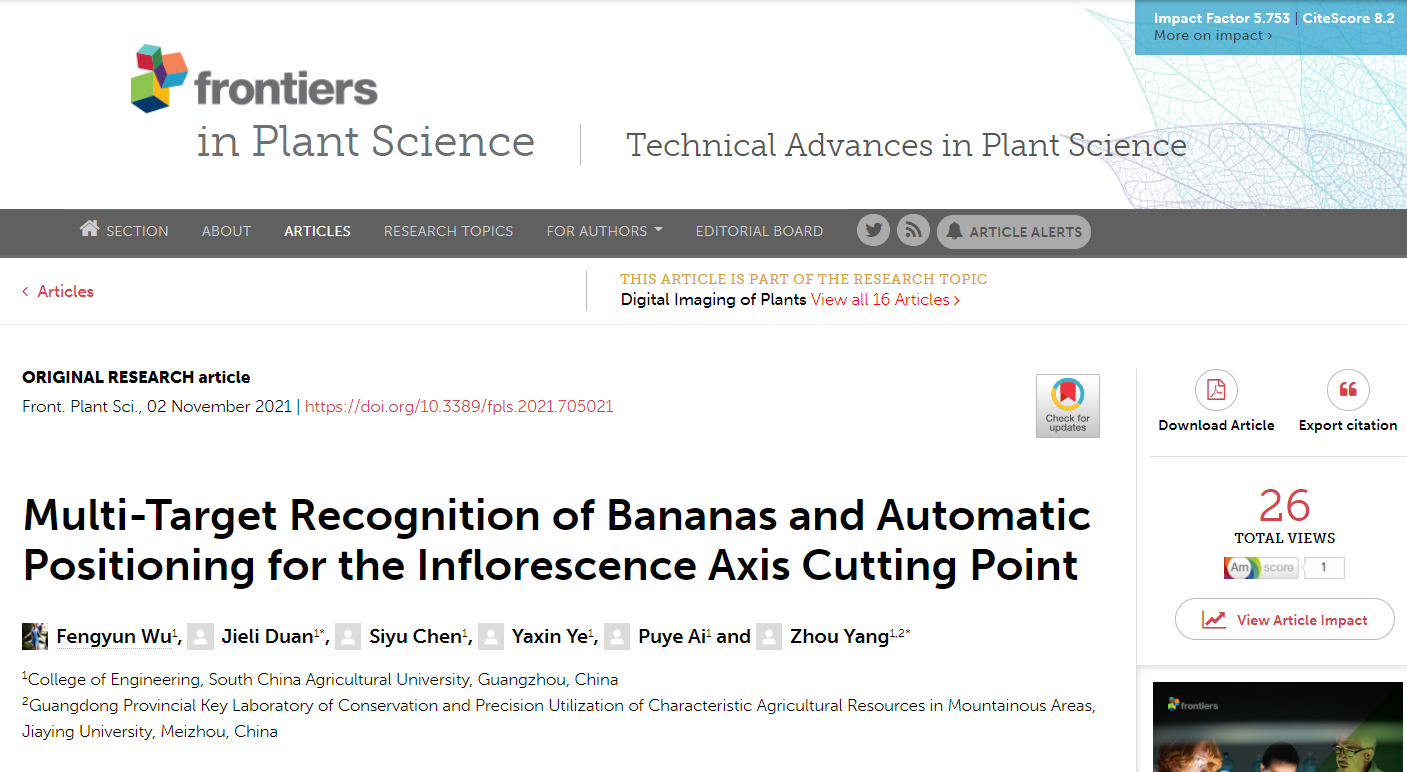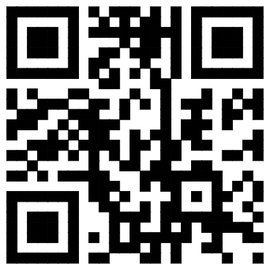2021年11月2日,国家香蕉产业技术体系果园生产机械化岗位的论文“Mulit-Target Recognition of Bananas and Automatic Positioning for the Inflorescence Axis Cutting Point”被国际Top学术期刊《Frontiers in Plant Science》(SCI,TOP,IF=5.753)录用发表。该论文探索了复杂果园环境下利用改进的深度学习算法快速精确识别香蕉、花序轴和花蕾多目标的问题,并采用边缘图像处理算法和几何计算定位花序轴断蕾点。研究结果表明:顺逆光环境下,计算所得的断蕾切断点满足定位要求的比例分别为93%和90%,可满足机器人作业时的识别与切断定位的综合性能的要求。岗位专家杨洲教授为该论文的通讯作者。该项工作得到了中国财政部和农业农村部现代农业产业技术体系和国家重点研发计划项目资助。

题目:香蕉多目标识别及其花序轴切断点自动定位
作者:吴烽云,段洁利*,陈思宇,叶雅欣,艾璞晔,杨洲*
摘要:在风扰动、变化光照、枝叶遮挡等复杂噪声扰动下的果园环境,机器人实现多目标识别与定位是现代精准农业的一项极具挑战的任务。为获取香蕉断蕾机器人的切断作业的目标信息,本文通过改进的深度学习算法快速精确识别香蕉、花序轴和花蕾,采用边缘图像处理算法和几何计算定位花序轴切断点。提出基于聚类优化的改进YOLOv3模型,阐述了顺光与逆光对模型的影响。对花蕾和花序轴通过图像分割去噪获得其边缘图像,推导出其空间几何模型。计算花蕾的边缘对称中心及其质心,建立了花序轴求解方程,获取花序轴上的切断点。试验结果表明:综合考虑平衡速度与精度、顺逆光照环境影响,本文提出的聚类优化YOLOv3模型具有优势。顺光和逆光条件下,计算所得的断蕾切断点与人工确定的最优切断点之间像素总定位误差分别为4和5,满足定位要求的比例分别为93%和90%。研究表明,新方法可满足香蕉断蕾机器人的实时工作要求。
全文链接:Https://doi.org/10.3389/fpls.2021.705021
Multi-target recognition of bananas and automatic positioning for the inflorescence axis cutting point[J]. Frontiers in Plant Science, 2465.
Fengyun Wu, Jieli Duan*, Siyu Chen, Yaxin Ye, Puye Ai, Zhou Yang*
Abstract
Multi-target recognition and positioning using robots in orchards is a challenging task in modern precision agriculture owing to the presence of complex noise disturbance, including wind disturbance, changing illumination, and branch and leaf shading. To obtain the target information for a bud-cutting robotic operation, we employed a modified deep learning algorithm for the fast and precise recognition of banana fruits, inflorescence axes, and flower buds. Thus, the cutting point on the inflorescence axis was identified using an edge detection algorithm and geometric calculation. We proposed a modified YOLOv3 model based on clustering optimization and clarified the influence of front-lighting and backlighting on the model. Image segmentation and denoising were performed to obtain the edge images of the flower buds and inflorescence axes. The spatial geometry model was constructed on this basis. The center of symmetry and centroid were calculated for the edges of the flower buds. The equation for the position of the inflorescence axis was established, and the cutting point was determined. Experimental results showed that the modified YOLOv3 model based on clustering optimization showed excellent performance with good balance between speed and precision both under front-lighting and backlighting conditions. The total pixel positioning error between the calculated and manually determined optimal cutting point in the flower bud was 4 and 5 pixels under the front-lighting and backlighting conditions, respectively. The percentage of images that met the positioning requirements was 93 and 90%, respectively. The results indicate that the new method can satisfy the real-time operating requirements for the banana bud-cutting robot.
内容编辑:
 地址:海南省海口市城西学院路4号(571101)
地址:海南省海口市城西学院路4号(571101) 电话:0898-66986419 传真:0898-66986419
电话:0898-66986419 传真:0898-66986419  E-mail:china_banana2008@vip.163.com
E-mail:china_banana2008@vip.163.com